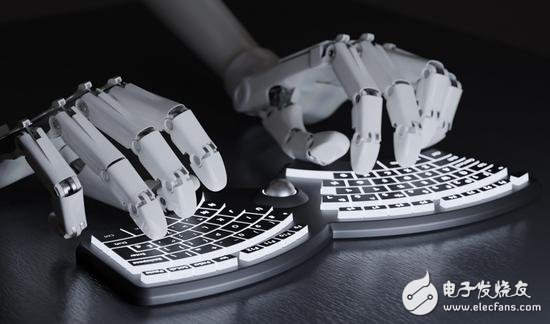Electronic enthusiasts eight o'clock: April 7 news, according to VentureBeat, people's concerns about automation will replace more jobs. According to Bauer State University research, about 5 million jobs have been evaporated in the US since 2000, and 88% of them are due to automation that drives productivity. So, what can we do to deal with this trend? Real estate tycoon Jeff Greene recently spoke about the topic of automated subversion of jobs and how we should respond when hosting the second Managing the DisrupTIon conference in Palm Beach, Florida. In 2016, Green claimed that robots and artificial intelligence were not only killing blue-collar jobs, but also many white-collar jobs, including lawyers, journalists, pilots, and doctors. Green also published in the Washington Post warning that automating the killing of jobs will be faster, even beyond the predictions of Trump's Treasury Secretary Steven Mnuchin. Not long ago, Nuchin said that he believes that automation-related work will be largely replaced from 50 to 100 years later. The well-known law firm PricewaterhouseCoopers recently released a report estimating that by 2030, 38% of jobs in the United States are likely to be replaced by automation. However, Green's point of view is that if automation can improve deployment and reduce the cost of living in the middle class, so that they no longer need more income to survive, then automation is not entirely a bad thing. For example, building a home with a 3D printer can significantly reduce the cost of housing, and people don't have to spend most of their income on repaying home mortgages. If the machine can use high-density resin 3D printing houses, the current $200,000 home may drop to $50,000. After all, for most families, buying a home is a heavy burden. Another big part of the household budget is energy, which can solve some problems by using alternative energy sources. If the United States uses solar energy to power electric vehicles and heat the home, every family can save a lot of money. Of course, this assumes that alternative energy costs are lower than oil. In Green's view, the net effect is that people don't have to work 80 to 90 hours a week to pay their bills. If they can sustain their lives with less income and the needs of the dual-employee family are reduced, then the father or mother can be allowed to stay at home to accompany the child. This, in turn, can reduce the risk of a child taking drugs or getting pregnant. Green admits that his ideas may be a bit "Utopia", and he also sees the danger of the introduction of automation to workers in all walks of life. Many people worry that automation will also lead to a “universal basic income†system. In this hypothetical scenario, all people who are too young and have no social insurance can receive a government-issued annual salary. In Silicon Valley and other technology centers, this is a very fashionable idea that is seen as one of the ways to deal with automation to replace work. But there is a small problem here: "universal basic income" may not be borne by the government. As Lawrence Summers, the former US Treasury secretary, pointed out, if you pay $25,000 a year for every adult American, the cost would be $5 trillion a year, more than the annual income tax in the US. Trillions of dollars. Summers said: "From an arithmetic point of view, this is almost impossible to achieve." Others want to see smaller, more specific strategic actions, such as improving student science and technology education and providing retraining for current employees. Not long ago, GE donated $50 million to Boston Public Schools to help improve science, technology, engineering, and math (STEM) education to build talent that bridges the technology divide. This may be the right direction, but a larger retraining is needed to bridge the nationwide technological divide. But for the Republican-controlled Congress, the desire to increase funding for education does not seem to be strong. Others believe that technologies like augmented reality should be able to help by superimposing information into the real world by connecting glasses. For example, field service technicians can project charts, instructions, and even videos into smart glasses so they can work faster and better without having to consult a variety of manuals. Technology company Upskill has begun offering similar technologies to customers such as General Electric and Boeing. Upskill executive chairman Magid Abraham said: "This technology can enhance the technical capabilities of non-professional workers while helping expert workers improve efficiency." Let's go back to the Managing the DisrupTIon conference. Green is concerned about the optimism of most of the speakers, including former British Prime Minister David Cameron and New York Times columnist Thomas Frey. Thomas Friedman. He said: "If I am really optimistic about the future of automation, I will not spend a lot of energy and time to hold such a conference." Green said that the difference between the industrial revolution of the 19th century and the current situation is that at that time, the machine only replaced manual labor, and at the same time created more work related to the manufacture of products such as retail, bookkeeping, beauty, and accounting. But now, we not only need to deal with robots that can replace manual labor, but also artificial intelligence that threatens mental labor. Green said: "We can't compete with physical machines and thinking machines at the same time." Disclaimer: The electronic reprinted works of E-Commerce Network are as far as possible to indicate the source, and all rights of the owner of the work are not transferred due to the reprint of this site. If the author does not agree to reprint, please inform the site to delete or correct it. Reprinted works may be subject to change in title or content. Shenzhen Ruidian Technology CO., Ltd , https://www.szwisonen.com
November 08, 2024